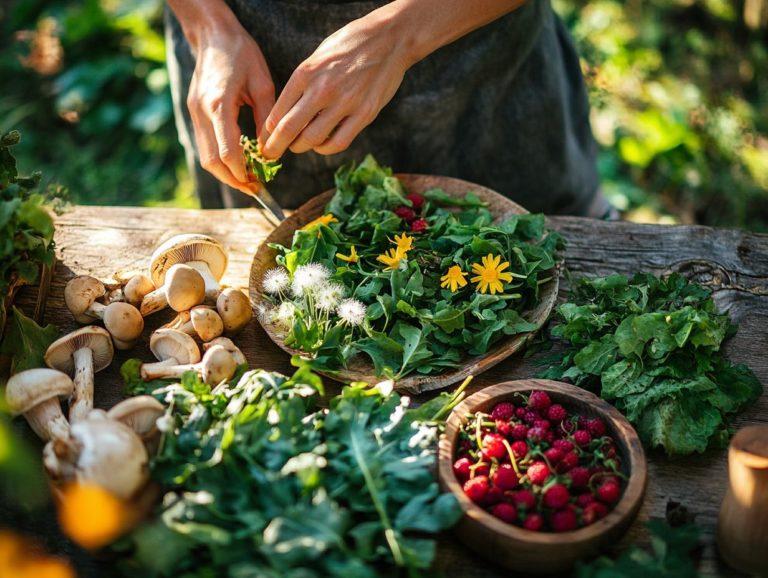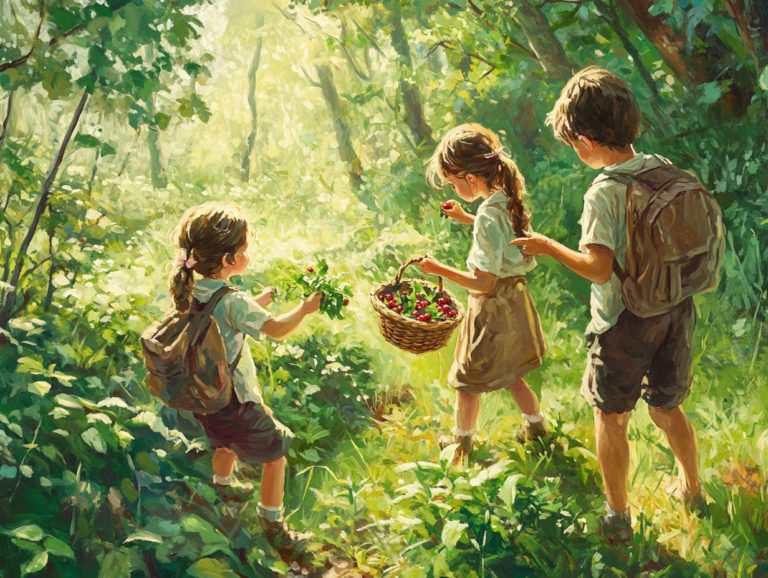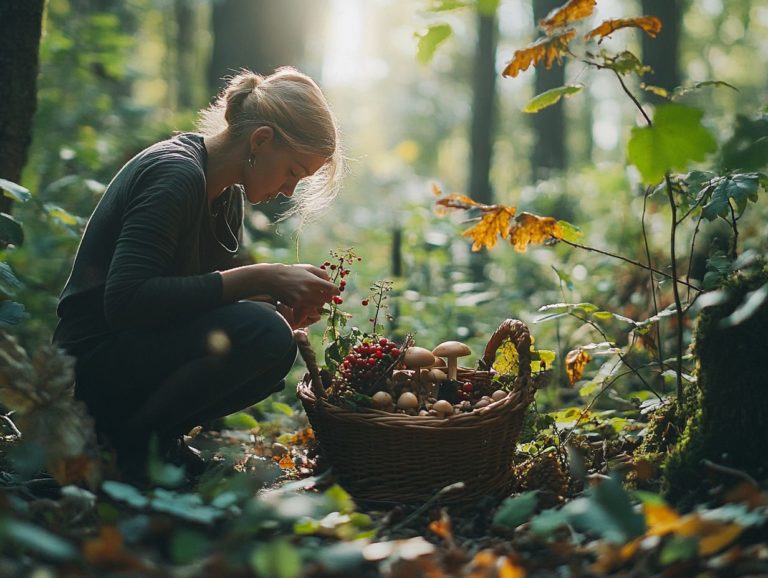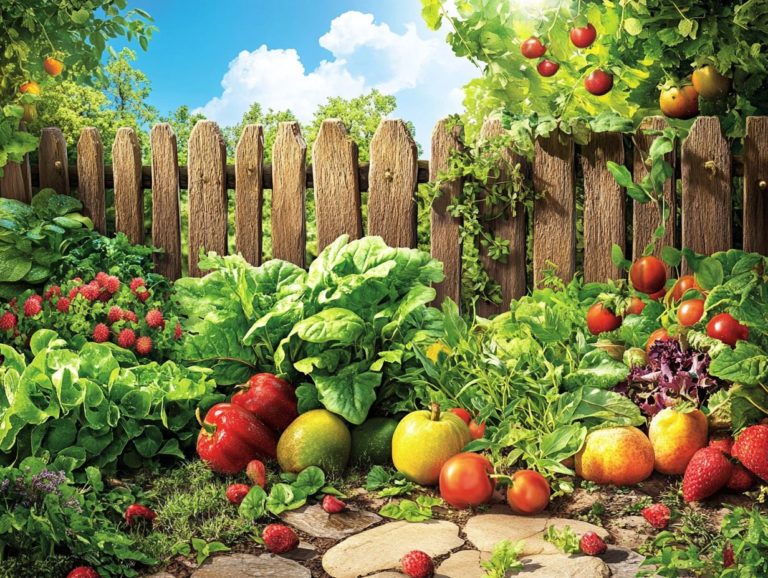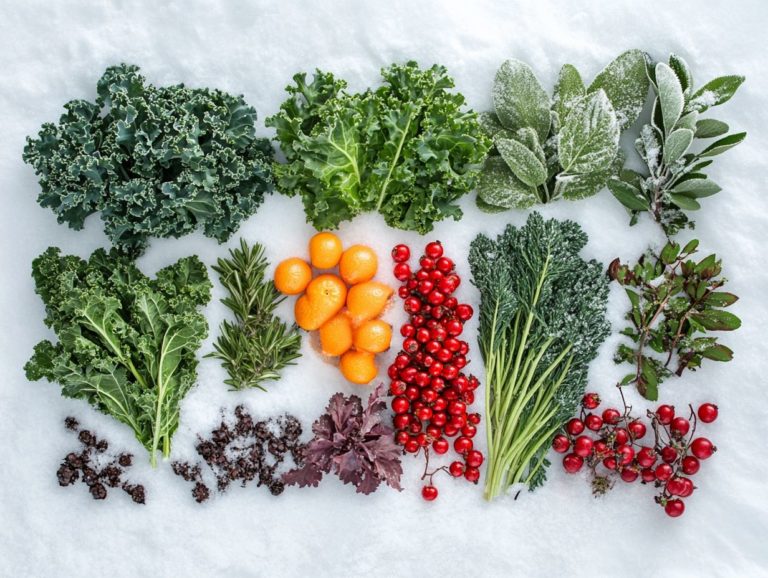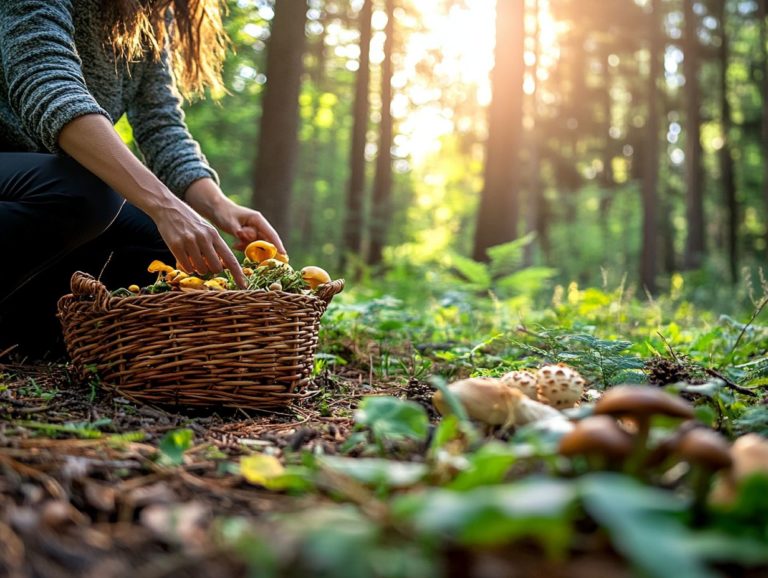What Equipment Do I Need for Foraging?
Foraging, the exquisite art of hunting for wild edibles, presents a remarkable fusion of adventure, health benefits, and sustainability. As you delve into nature’s bounty, you ll uncover not just delightful ingredients for your culinary creations but also a profound connection to the environment around you.
This guide equips you with the essentials of foraging, covering everything from the necessary equipment to safety tips that ensure a worry-free experience, along with etiquette for responsible harvesting. Join us on this thrilling journey and uncover the delightful secrets of foraging!
Contents
- Key Takeaways:
- Benefits of Foraging
- Essential Equipment for Foraging
- Foraging Safety Tips
- Foraging Etiquette
- Frequently Asked Questions
- What Equipment Do I Need for Foraging?
- What is the most important piece of equipment for foraging?
- Do I need any special clothing for foraging?
- Should I bring any containers or bags for collecting foraged items?
- Is there any other equipment I should bring for foraging?
- Can I forage without any equipment?
Key Takeaways:
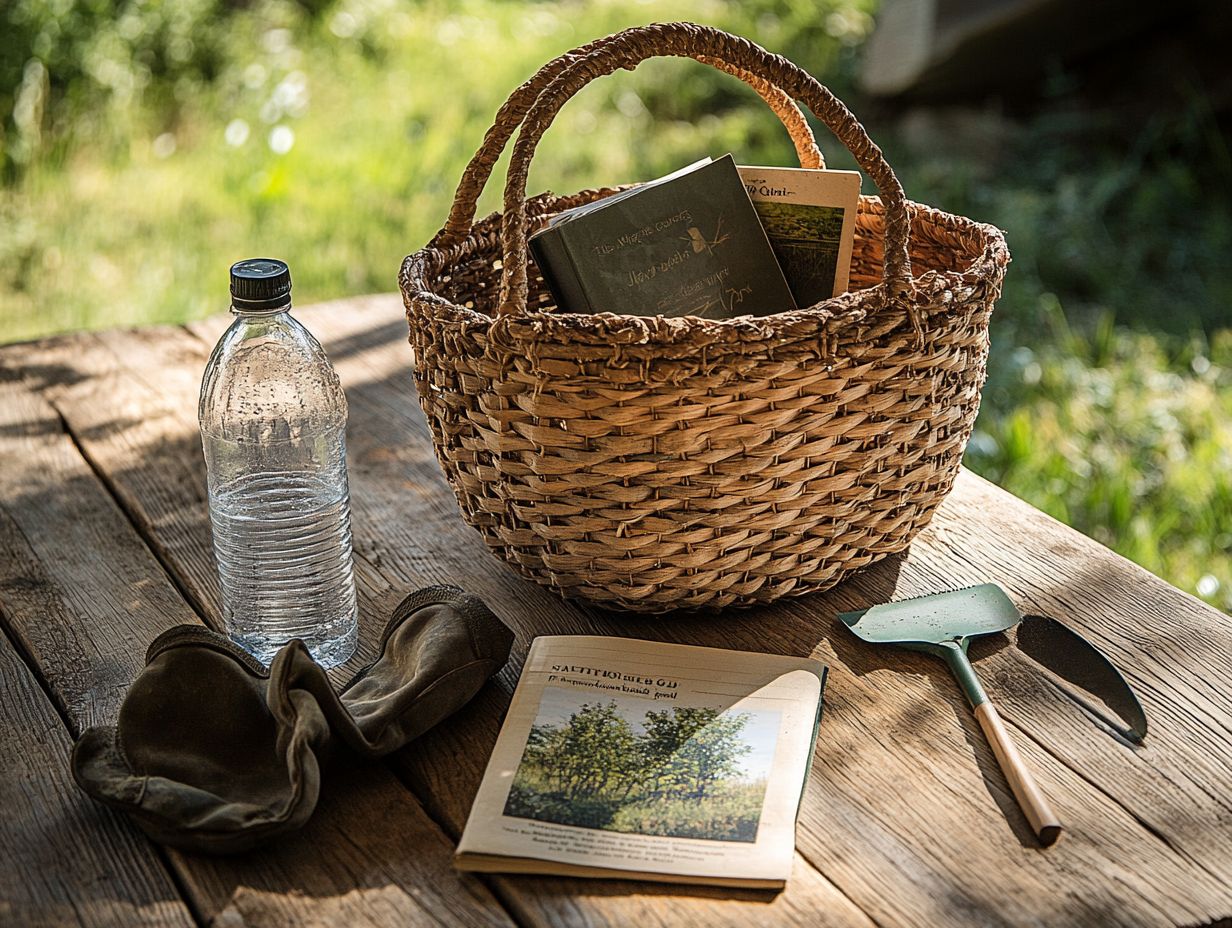
- Foraging is a sustainable and rewarding activity that can provide both health and environmental benefits.
- Basic tools and supplies, as well as specialized gear for different environments, are essential for a successful foraging experience.
- Practicing safety measures and respecting foraging etiquette are important for protecting both yourself and the environment while foraging.
What is Foraging?
Foraging has roots that stretch back to the Neolithic Revolution, an exciting time when our ancestors made a crucial shift from wandering to farming. This ancient survival skill, steeped in our hunter-gatherer roots, intertwines gathering wild plants and fungi with the rich tapestry of human history. In recent years, foraging has surged in popularity as many seek to reconnect with nature and rediscover the wisdom of sustainable gathering and the myriad benefits of wild foods.
Foraging not only serves as a means of sustenance but also deepens your connection with the environment. Understanding local flora and fauna has become paramount; being able to distinguish between edible delights like wild garlic or chanterelle mushrooms and their toxic look-alikes can truly mean the difference between a sumptuous meal and potential danger.
By embracing foraging, you open the door to a vast world of wild plants and fungi, gaining valuable insights into the way nature works together to support life.
Benefits of Foraging
The benefits of foraging extend far beyond securing a food source. Engaging in this practice enhances mental well-being, fosters sustainability, and offers a fulfilling harvesting experience. It deepens your connection to nature and champions food self-sufficiency, enriching your life in ways that transcend the act of gathering.
Health Benefits
Foraging presents a wealth of health benefits, urging you to indulge in nutrient-rich wild plants and delectable edible mushrooms. These natural treasures are packed with vitamins and minerals, promoting your mental well-being through invigorating outdoor activity. This diverse nutritional profile is essential for your overall vitality, as the variety of foraged foods can include essential fatty acids, antioxidants, and phytochemicals that contribute to a balanced diet.
Research indicates that individuals who immerse themselves in foraging often experience lower levels of anxiety and depression, crediting these positive changes to the soothing embrace of nature. The very act of foraging cultivates mindfulness, nurturing a deeper connection with the environment. Anecdotal evidence suggests that spending time in the wilderness enhances your physical health and uplifts your mood, creating an ideal fusion of nourishment for both body and mind.
Sustainability Benefits
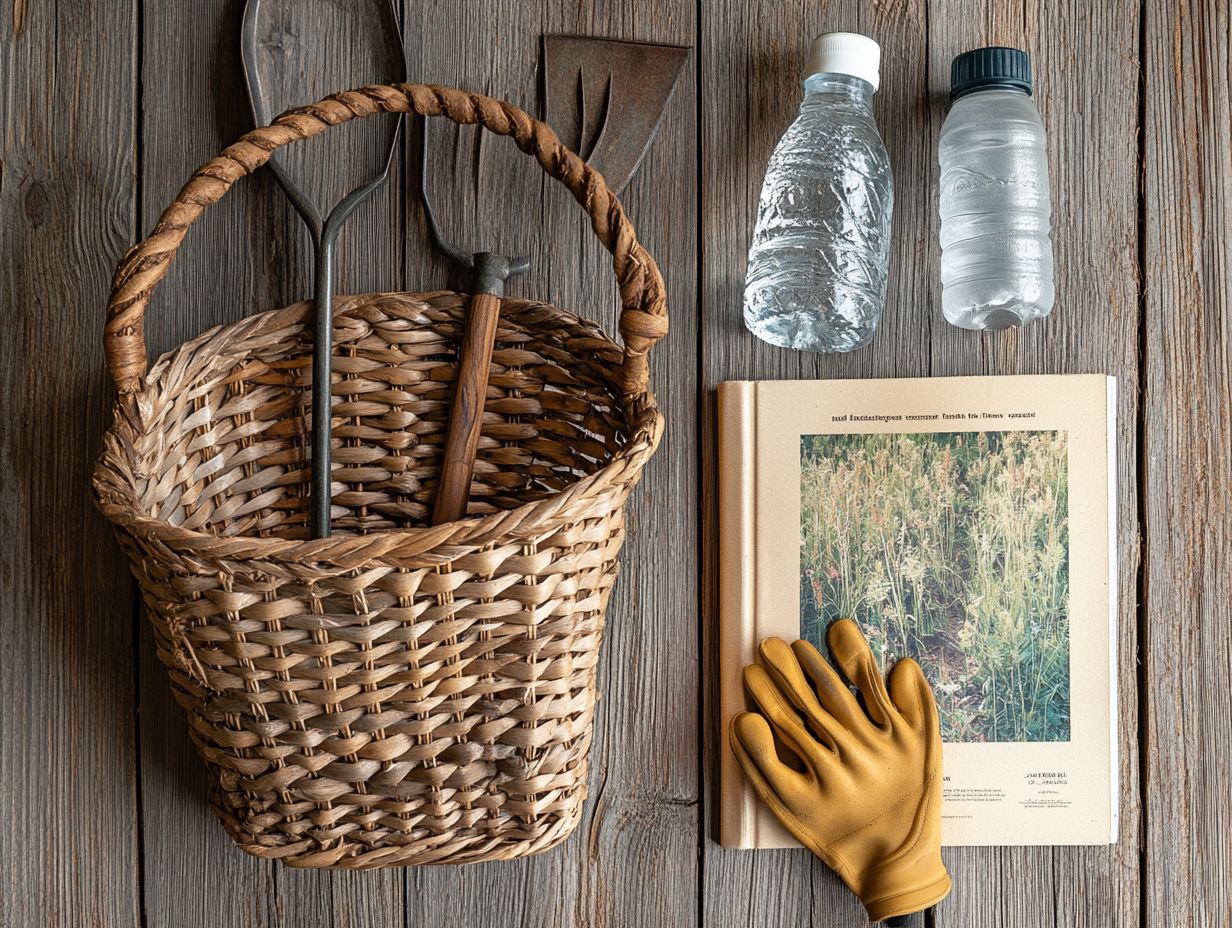
Engaging in sustainable gathering practices through foraging supports local ecosystems and promotes biodiversity, which is the variety of life in a particular habitat. It also helps you achieve food self-sufficiency. This journey fosters a deeper connection to your local area and its wild foods.
By embracing this practice, you can reduce your reliance on artificial plant food and pesticides. As you adopt seasonal harvesting techniques, your activities will harmonize with the natural rhythms of the environment, allowing plant populations to regenerate and thrive. This mindfulness nurtures a sense of stewardship, making you more aware of the health of your surrounding ecosystems.
The nutritional benefits of consuming locally foraged foods can greatly enhance your personal well-being, nurturing both body and mind. At the same time, you ll contribute to a community that values sustainable practices and ecological balance.
Essential Equipment for Foraging
Equipping yourself with the essential tools for foraging is vital for a successful and safe gathering experience. To get started, beginners should know about foraging tools, which include:
- Pruning knife
- Digging implements
- Suitable collection containers
Having the right gear like foraging bags and a hydration bladder will enhance your overall experience in the great outdoors.
Basic Tools and Supplies
Your basic foraging tools include a trusty pruning knife for slicing through edible plants and robust digging tools for unearthing root vegetables. Use collection containers like mesh bags and specialized foraging bags to make gathering wild foods easier.
These essentials pave the way for a bountiful harvest while also protecting the environment by minimizing damage to ecosystems. A sturdy pruning knife is crucial for precision cutting, while durable digging tools help you carefully extract roots with minimal soil disruption.
When choosing your collection containers, opt for breathable options that promote airflow to prevent spoilage, such as mesh bags. Lightweight materials are also a smart choice for easy transport.
To keep your tools in peak condition, make it a habit to clean them after each use, sharpen the cutting edges, and store them in a dry place. Doing so enhances their longevity and efficiency for future foraging adventures.
Recommended Gear for Different Environments
When foraging in various environments, having the right gear is essential. Consider packing:
- Sturdy hiking boots
- Protective clothing to fend off thorns and insects
- Bear spray for safety
- A good pair of binoculars for identifying plants from a distance
Wearing layers is wise, allowing you to adapt to changing weather conditions. A wide-brimmed hat keeps the sun at bay, and a dependable backpack is your best friend for carrying all those essentials, including:
- A first-aid kit
- Field guides for plant identification
- Containers for collecting your finds
Don t forget to grab some gloves to avoid skin irritation from certain plants. A reliable compass or GPS device will help you stay on track in unfamiliar territories. Being properly equipped enhances your foraging experience and reduces the risks associated with wilderness exploration.
Foraging Safety Tips
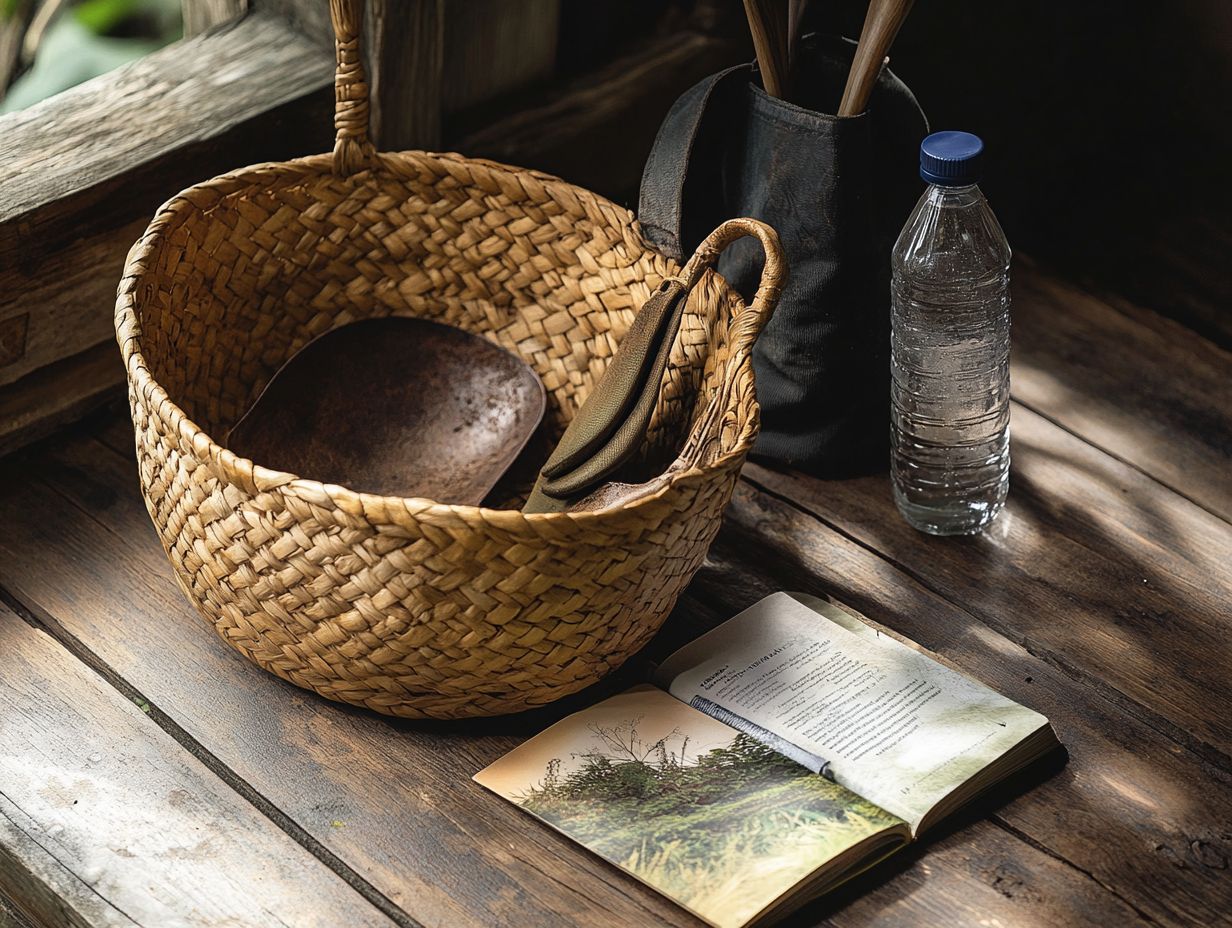
Foraging safety is essential for a rewarding experience. By understanding necessary precautions and best practices, you protect yourself from potential hazards, such as consuming toxic plants.
Don’t forget to stay hydrated! It makes your adventures safer and more enjoyable.
Precautions and Best Practices
Precautions and best practices for foraging include thoroughly researching local flora to identify any dangerous plants. Always carry a reliable field guide, and never consume any wild food unless you can positively identify it as safe.
Venturing into the wild with someone experienced can significantly enhance your safety. They can offer invaluable insights about the various plant species you might encounter. Avoid areas that may have been treated with pesticides or pollutants, as these substances can pose serious health risks.
If you come across potentially hazardous plants, remain calm and avoid touching or ingesting them. Instead, document their characteristics and seek guidance from knowledgeable sources. This will help you identify and avoid them in the future.
Foraging Etiquette
Understanding foraging etiquette is vital for you as a forager. It fosters responsible practices that honor local ecosystems and safeguard the sustainability of wild plants for future generations.
Responsible Foraging Practices
Responsible foraging practices require an understanding of local ecosystems to conserve wild foods and harvest plants sustainably. By embracing a caring approach to the environment, you contribute not only to your needs but also to the overall health of your surroundings.
Be mindful of the seasons different species flourish at different times. Only take what is necessary for personal use.
Embrace ethical harvesting practices like using tools that minimize damage to plants and avoiding over-harvesting any particular area. Engage in community efforts to restore and maintain habitats, promote biodiversity, and share your knowledge of local flora with others.
By prioritizing these principles, you actively ensure that local ecosystems remain vibrant for generations to come.
Frequently Asked Questions
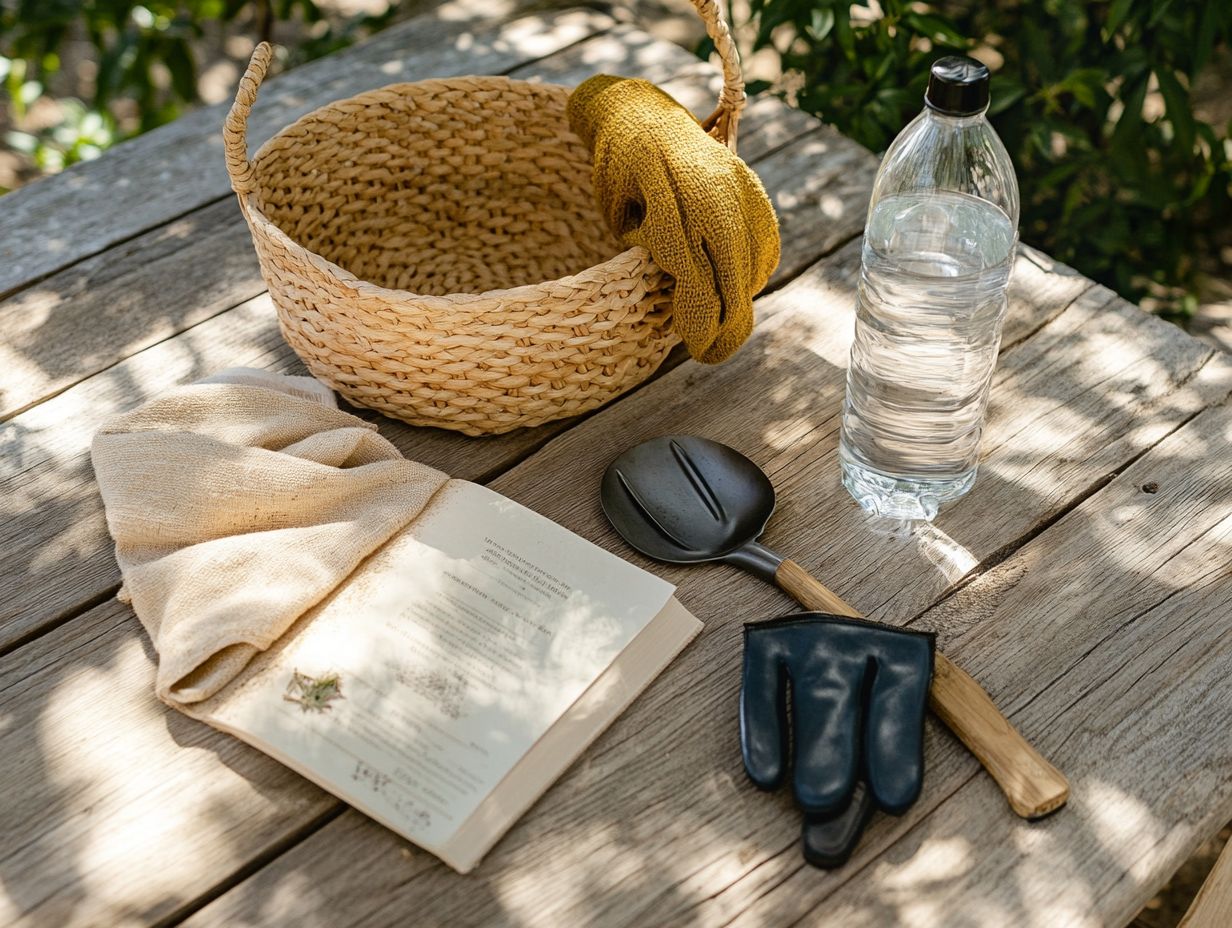
What Equipment Do I Need for Foraging?
Foraging is a fun and rewarding activity that can provide you with fresh, nutritious food. To get started, you might want to explore resources that can help you with foraging, along with a few essential pieces of equipment that are needed.
What is the most important piece of equipment for foraging?
The most important piece of equipment for foraging is a good field guide. It helps you identify plants and mushrooms in the wild and determine whether they are safe to eat.
Do I need any special clothing for foraging?
While there is no specific clothing required, dress appropriately for the weather and terrain. Comfortable, sturdy shoes and long pants are recommended to protect against potential hazards in the wild.
Should I bring any containers or bags for collecting foraged items?
Yes, it is important to bring a container or bag to collect your foraged items. This helps protect them from damage and makes it easier to carry them back home.
Is there any other equipment I should bring for foraging?
It is also helpful to bring a small knife or scissors for gathering plants and mushrooms, a water bottle, and a first aid kit for minor injuries. A walking stick or hiking pole may also be useful for difficult terrain.
Can I forage without any equipment?
While a field guide and other equipment can make foraging easier and safer, it is possible to forage without any equipment. However, it is crucial to have a good understanding of the plants and mushrooms you are foraging for and to practice caution and proper identification techniques.
Start your foraging adventure today!
Summary: Foraging safely and responsibly involves understanding local flora, practicing ethical harvesting, and engaging with the environment. Equip yourself with the right tools, knowledge, and mindset to enjoy this rewarding activity.

